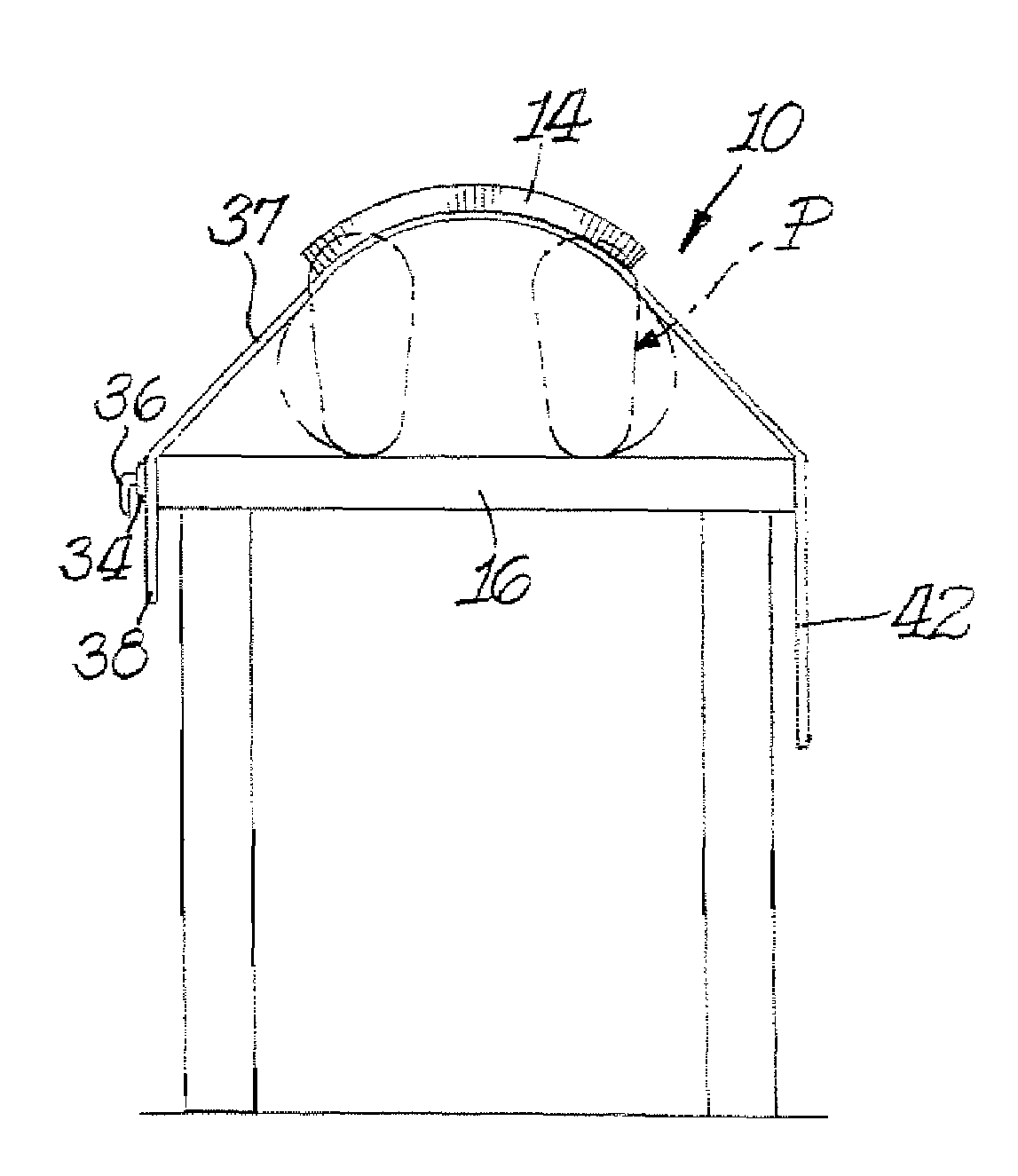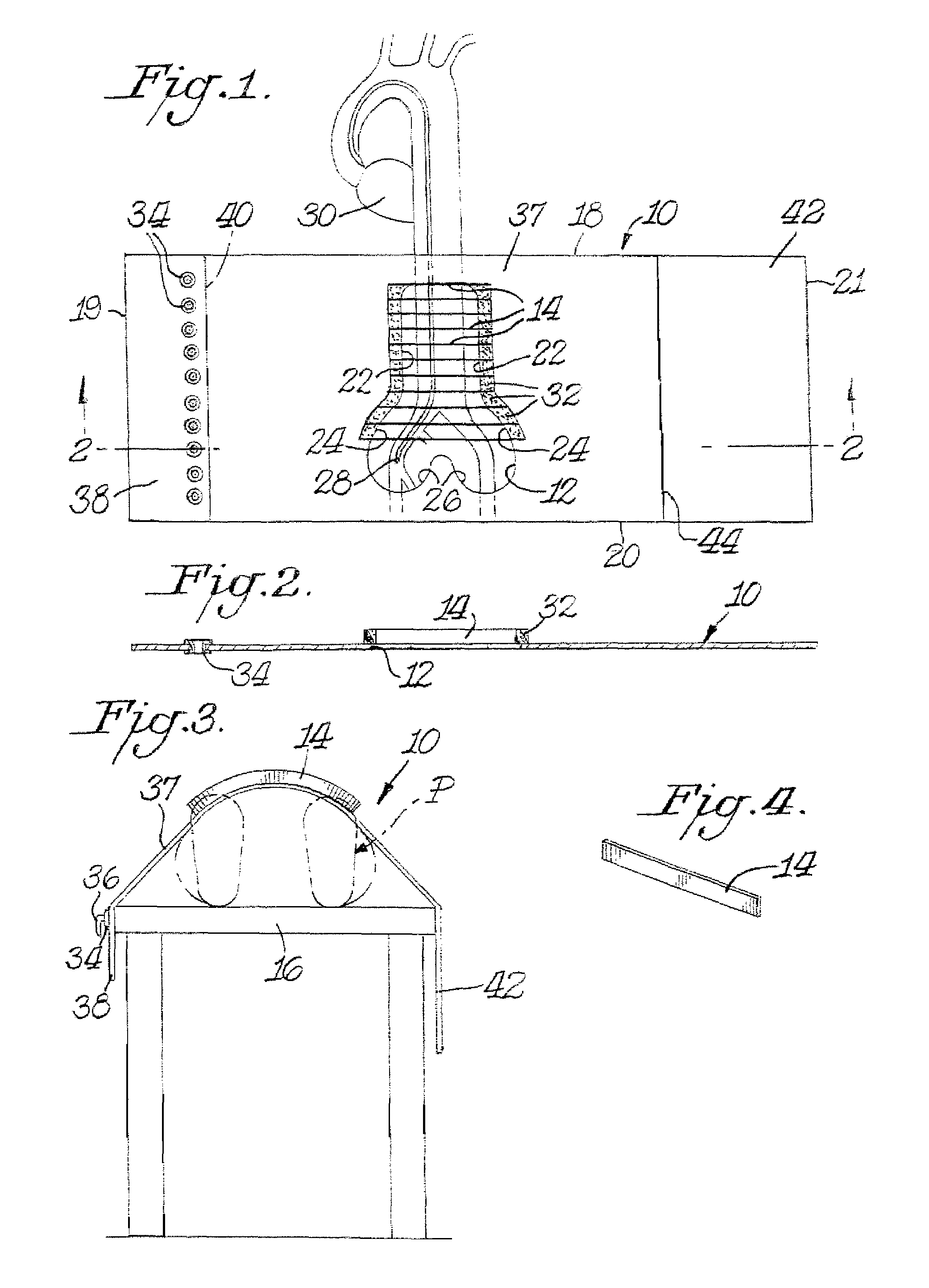Radiation shield
a radiation shield and shield technology, applied in the field of radiation shields, can solve the problems of difficult to see the patient, large exposure, and radiation can be redirected or scattered lik
- Summary
- Abstract
- Description
- Claims
- Application Information
AI Technical Summary
Benefits of technology
Problems solved by technology
Method used
Image
Examples
Embodiment Construction
[0012]In a preferred practice of the invention, such as illustrated in FIGS. 1-4, the radiation shield comprises a radio-opaque drape 10 made of any suitable radiation-opaque material, such as lead. The drape 10 includes a cut-out 12 having radiation control structure located in a portion of the open area 12 to minimize exposure to scattered radiation. Preferably, the radiation control structure is in the form of a vent having a plurality of radio-opaque slats 14 extending at least partially across at least a portion of the open area 12. Cut-out or open area 12 is located, for example, at about the center of the drape 10 so that it is properly disposed at the patient when the patient is lying on a table 16 as shown in FIG. 3.
[0013]In the specifically illustrated practice of this invention the radiation shield is intended to function in connection with cardiac imaging where it is desired to view catheters as they pass through the aorta. In order to minimize the size of the open area ...
PUM
 Login to View More
Login to View More Abstract
Description
Claims
Application Information
 Login to View More
Login to View More - R&D
- Intellectual Property
- Life Sciences
- Materials
- Tech Scout
- Unparalleled Data Quality
- Higher Quality Content
- 60% Fewer Hallucinations
Browse by: Latest US Patents, China's latest patents, Technical Efficacy Thesaurus, Application Domain, Technology Topic, Popular Technical Reports.
© 2025 PatSnap. All rights reserved.Legal|Privacy policy|Modern Slavery Act Transparency Statement|Sitemap|About US| Contact US: help@patsnap.com


